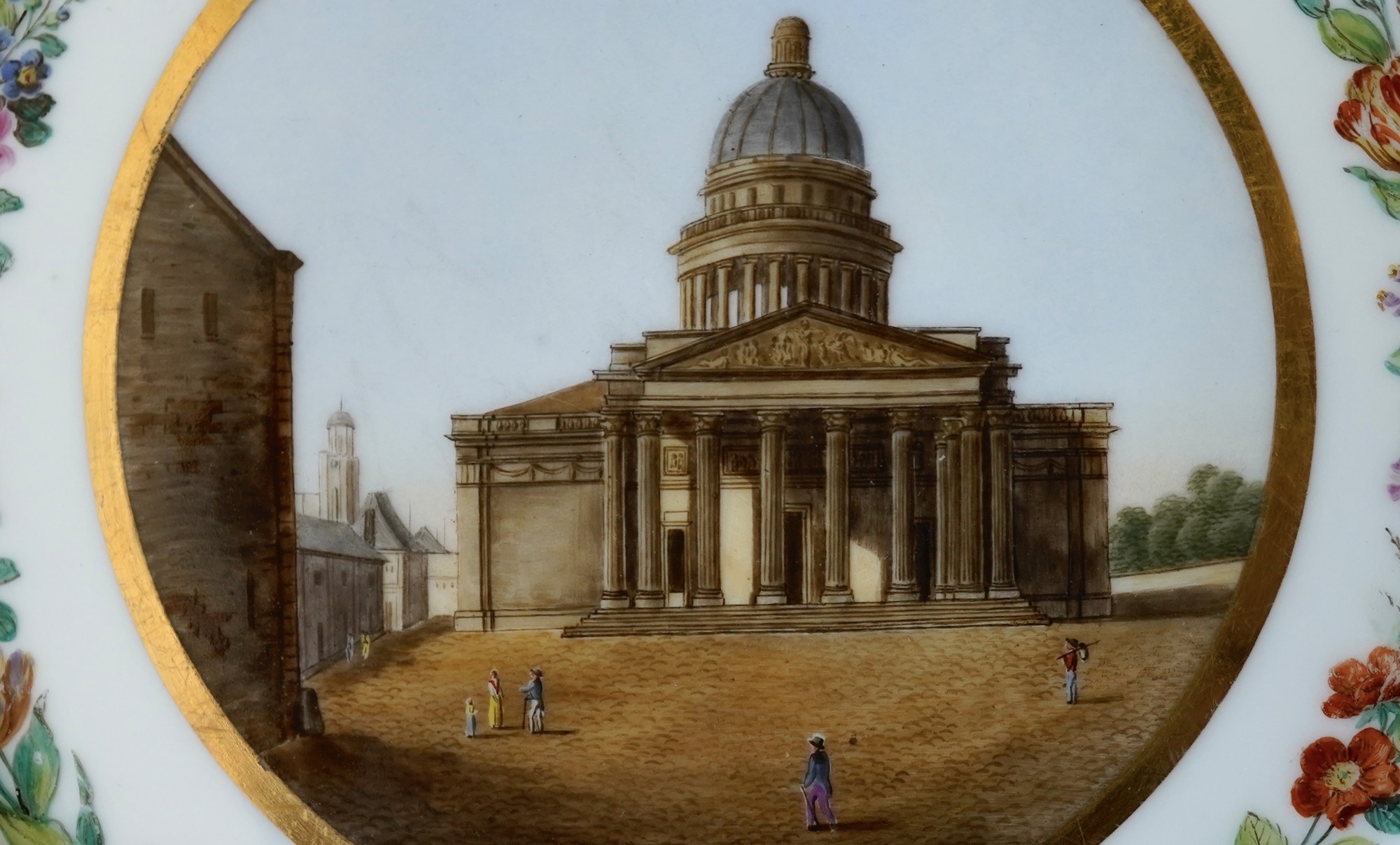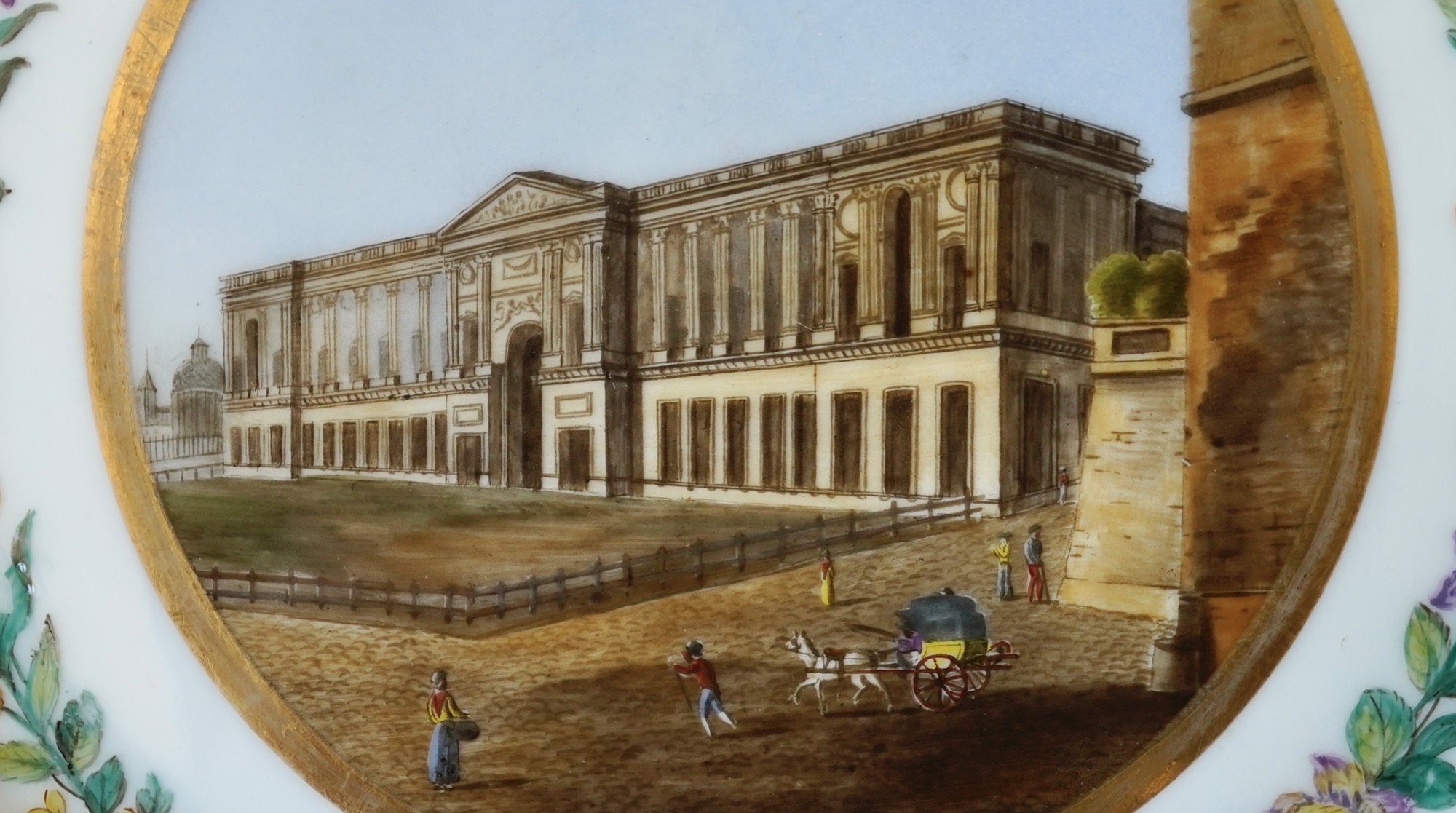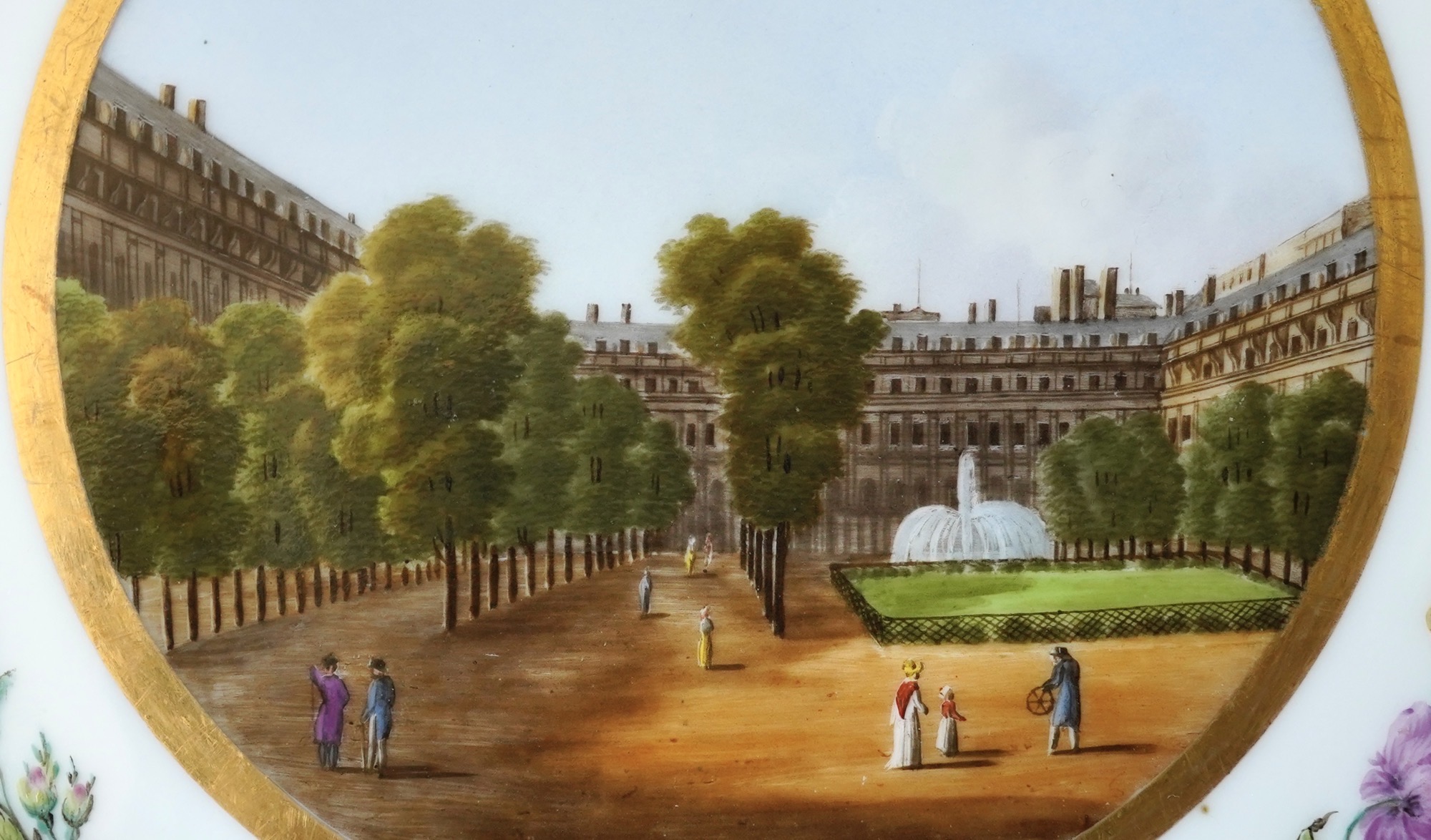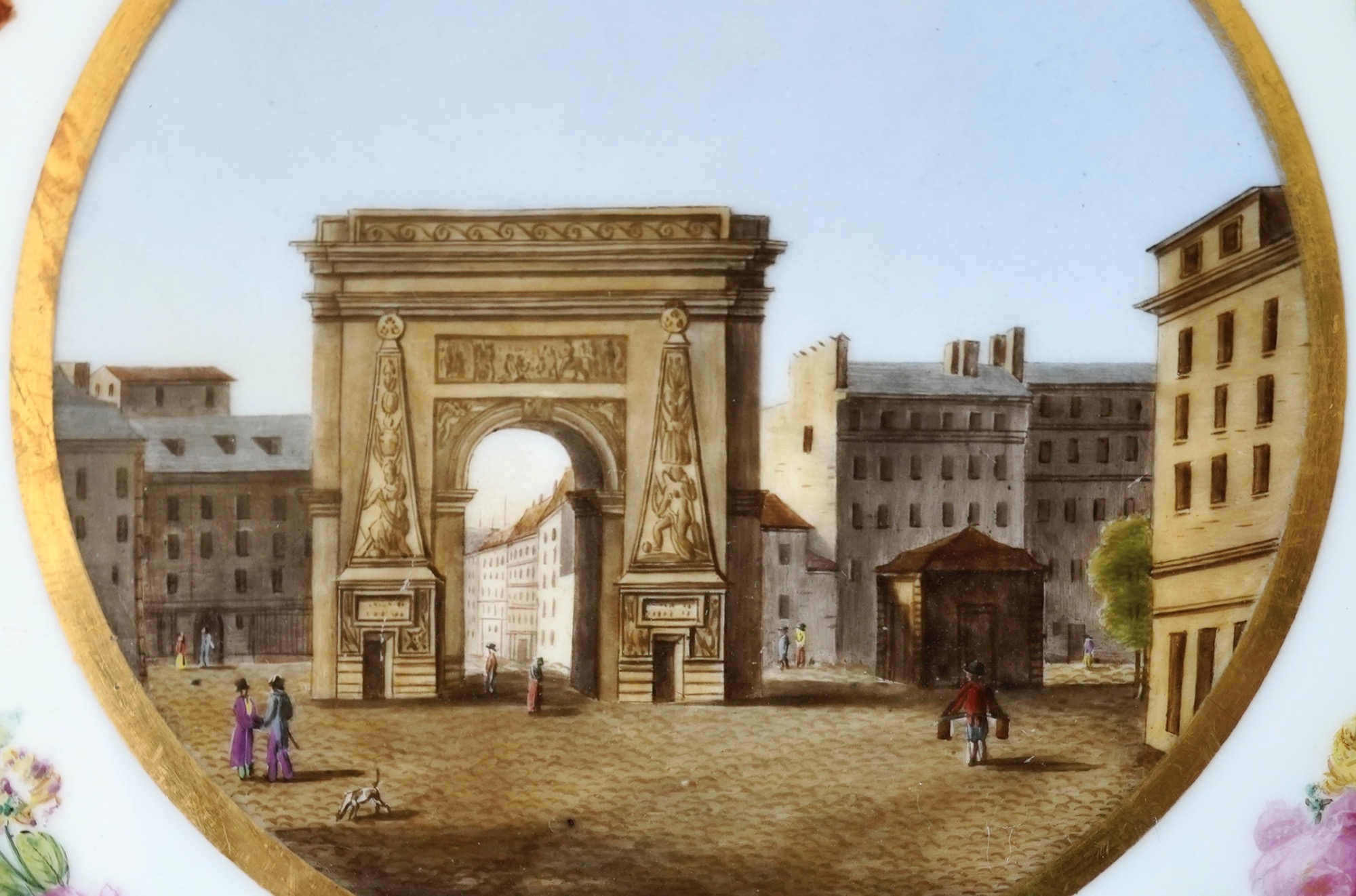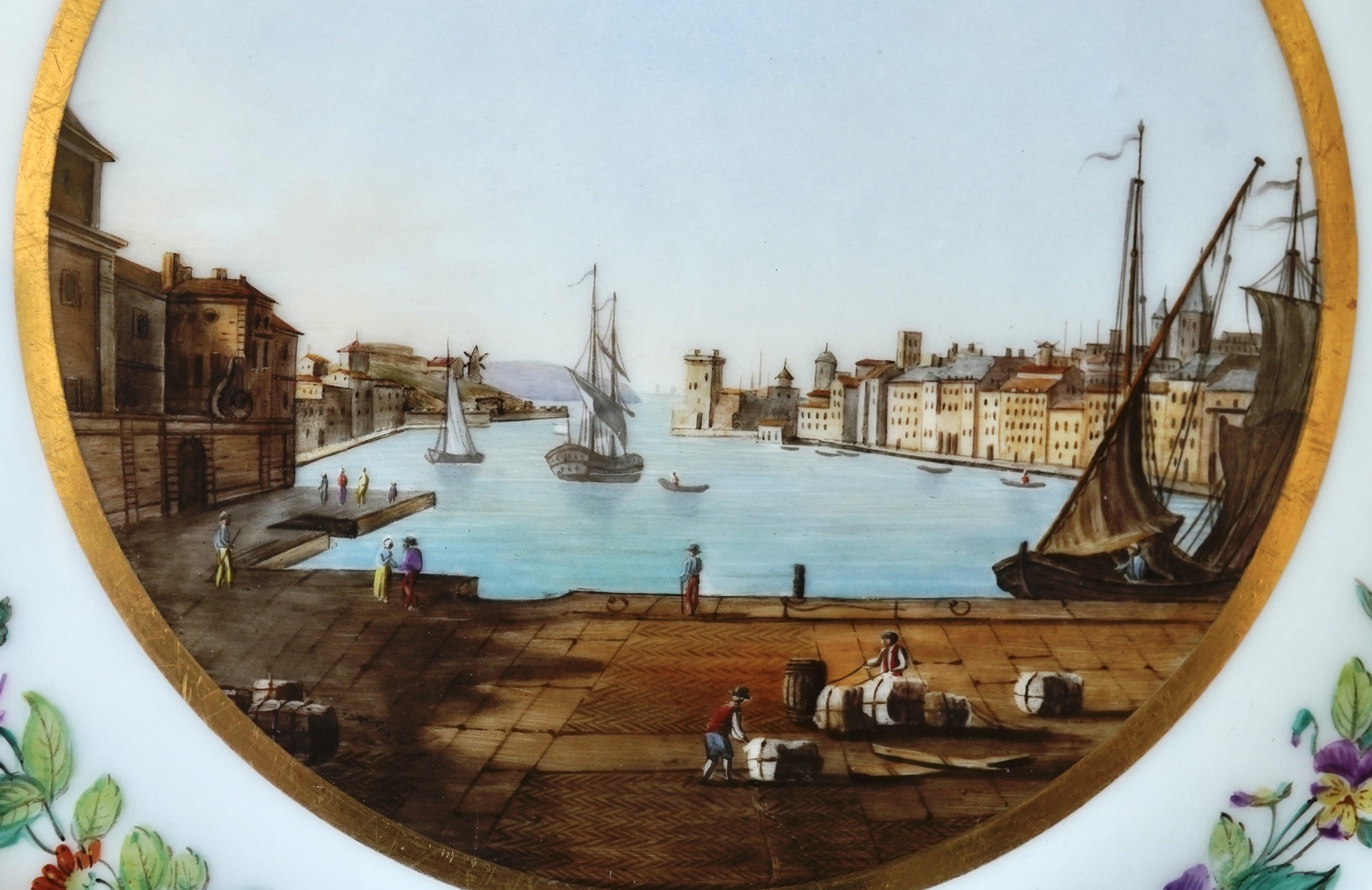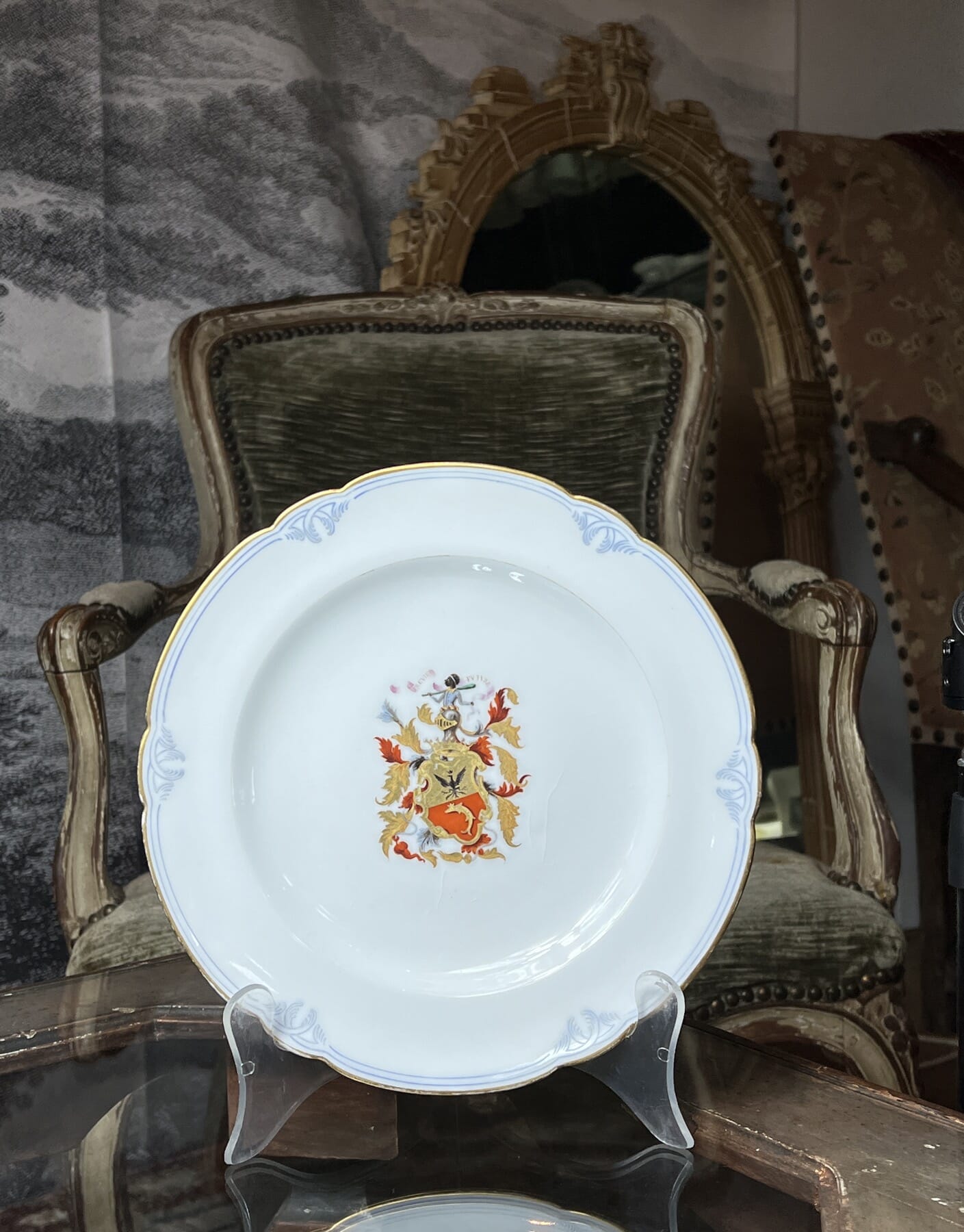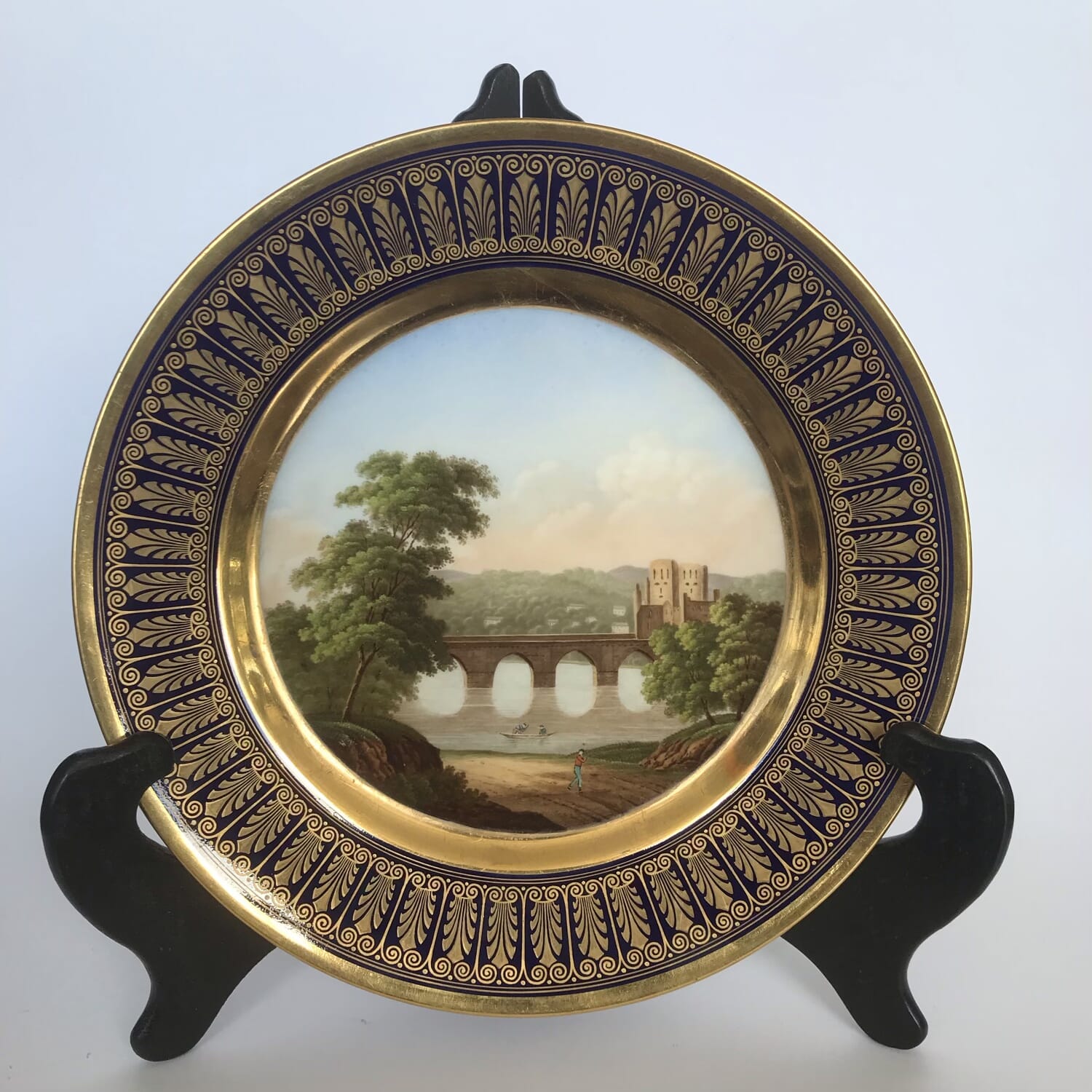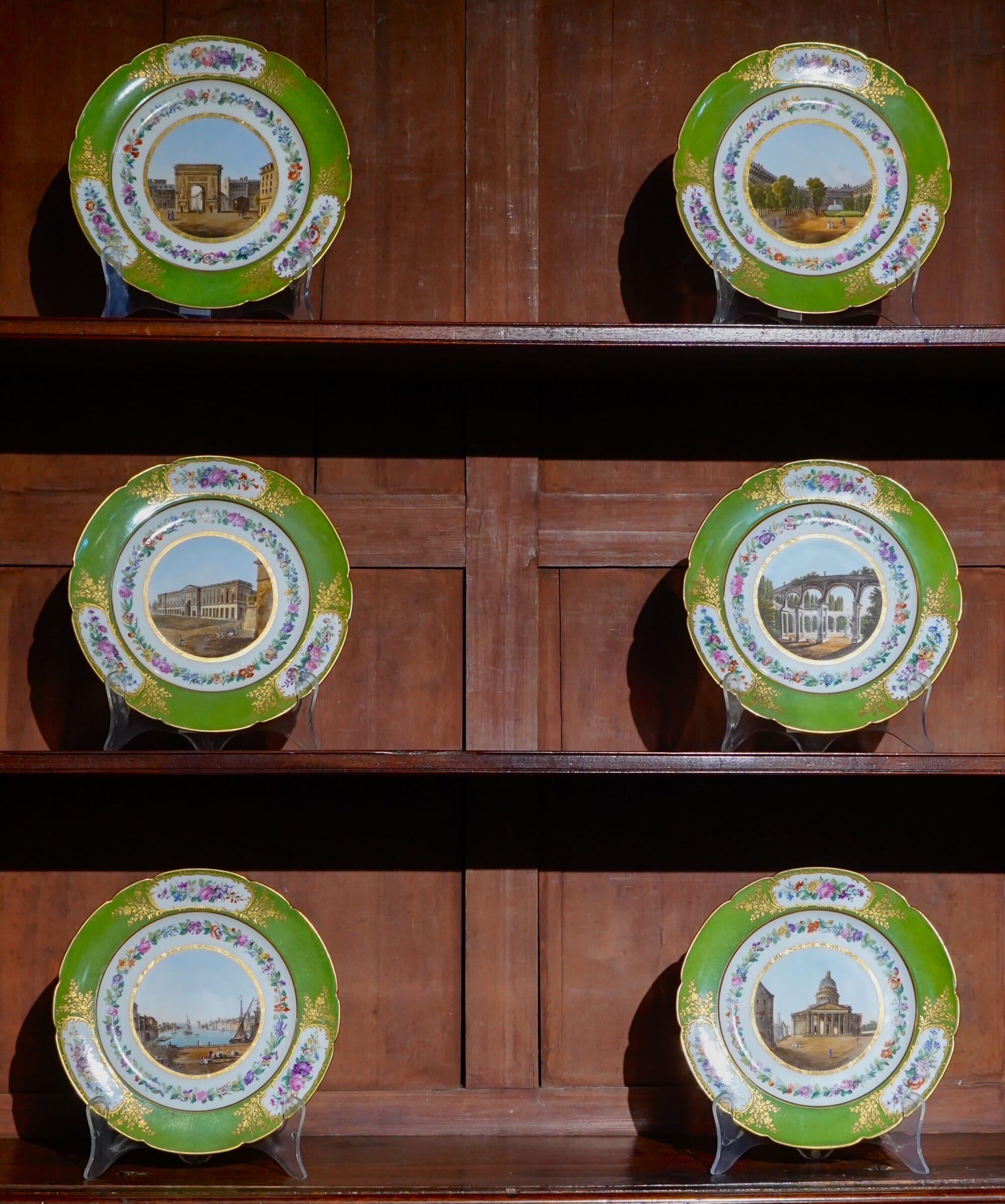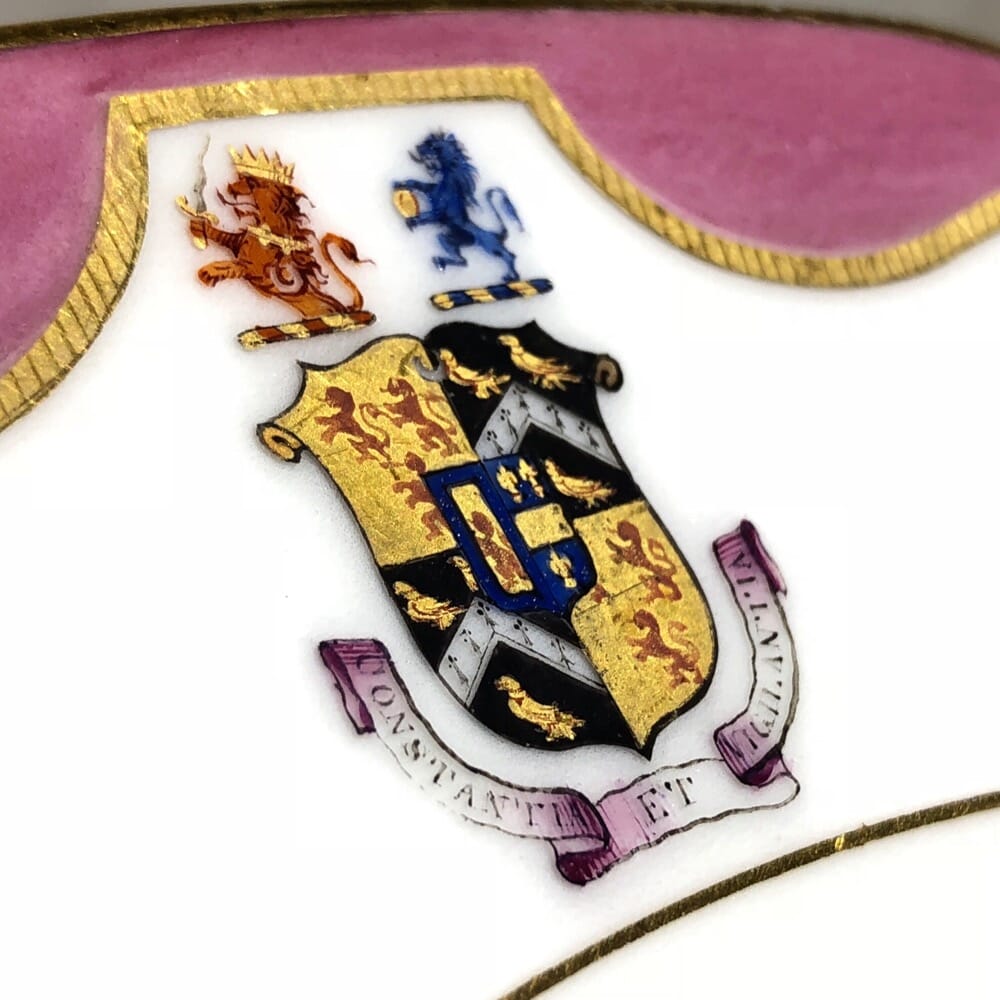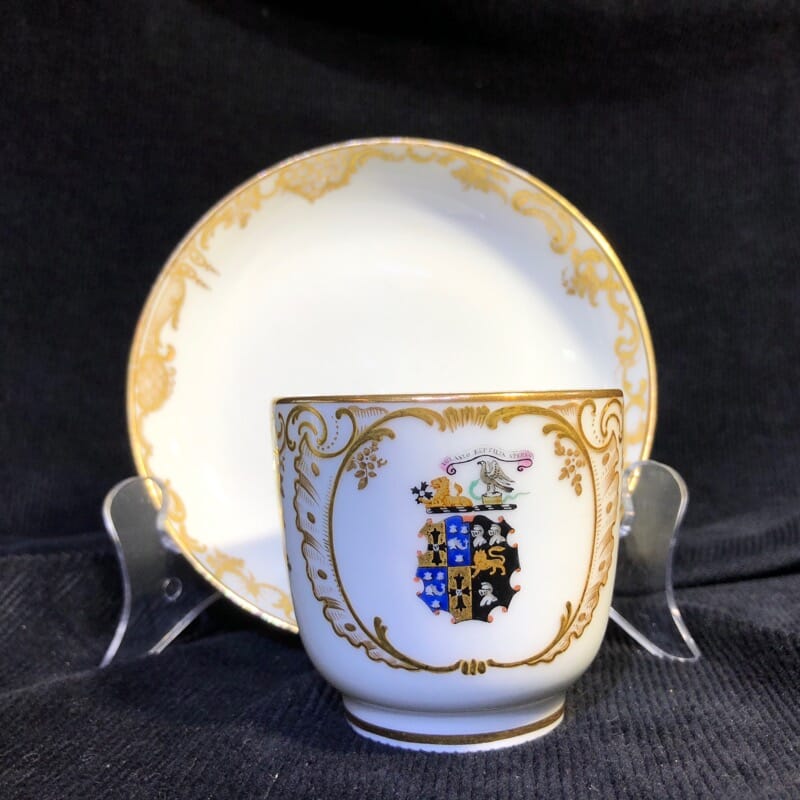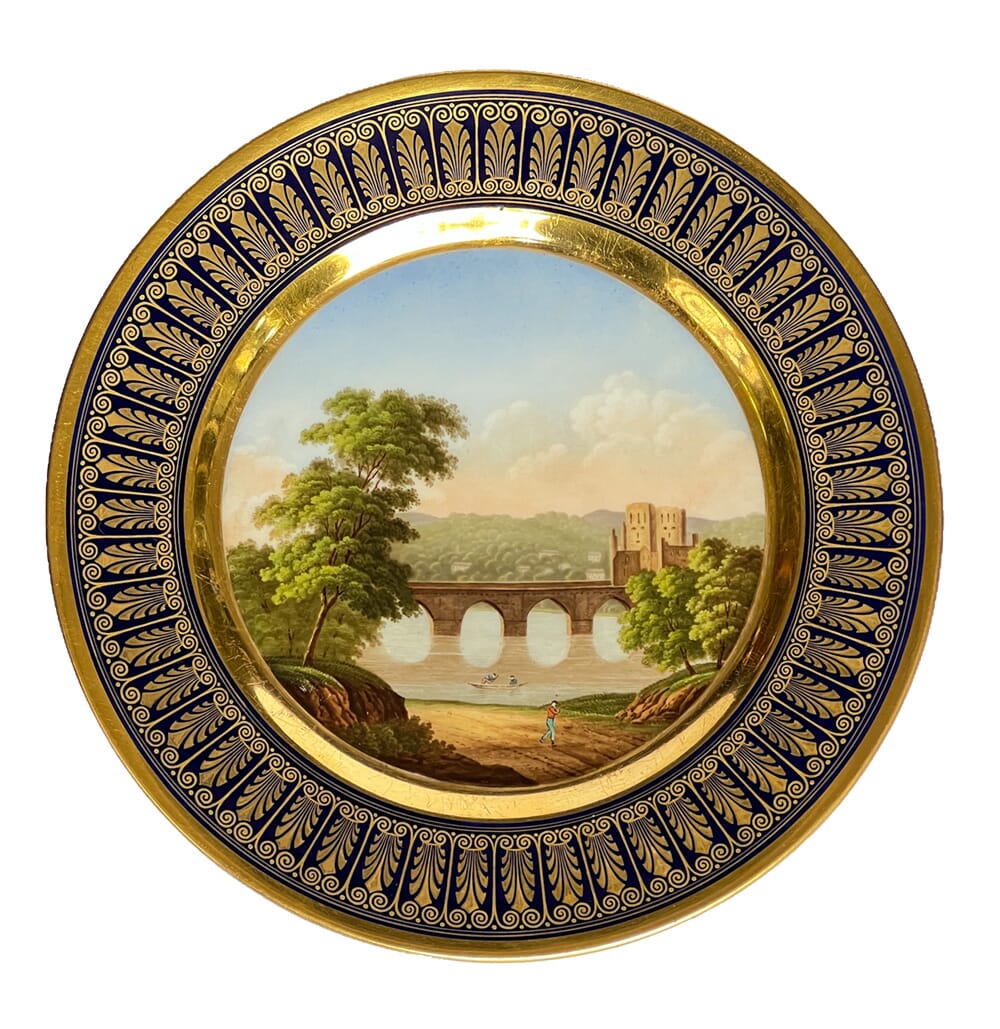
Fresh to Moorabool are a series of scenic plates.
Dating to the earlier 19th century, they are stunning examples of quality china-painting, worthy of a ‘fine-art’ title.
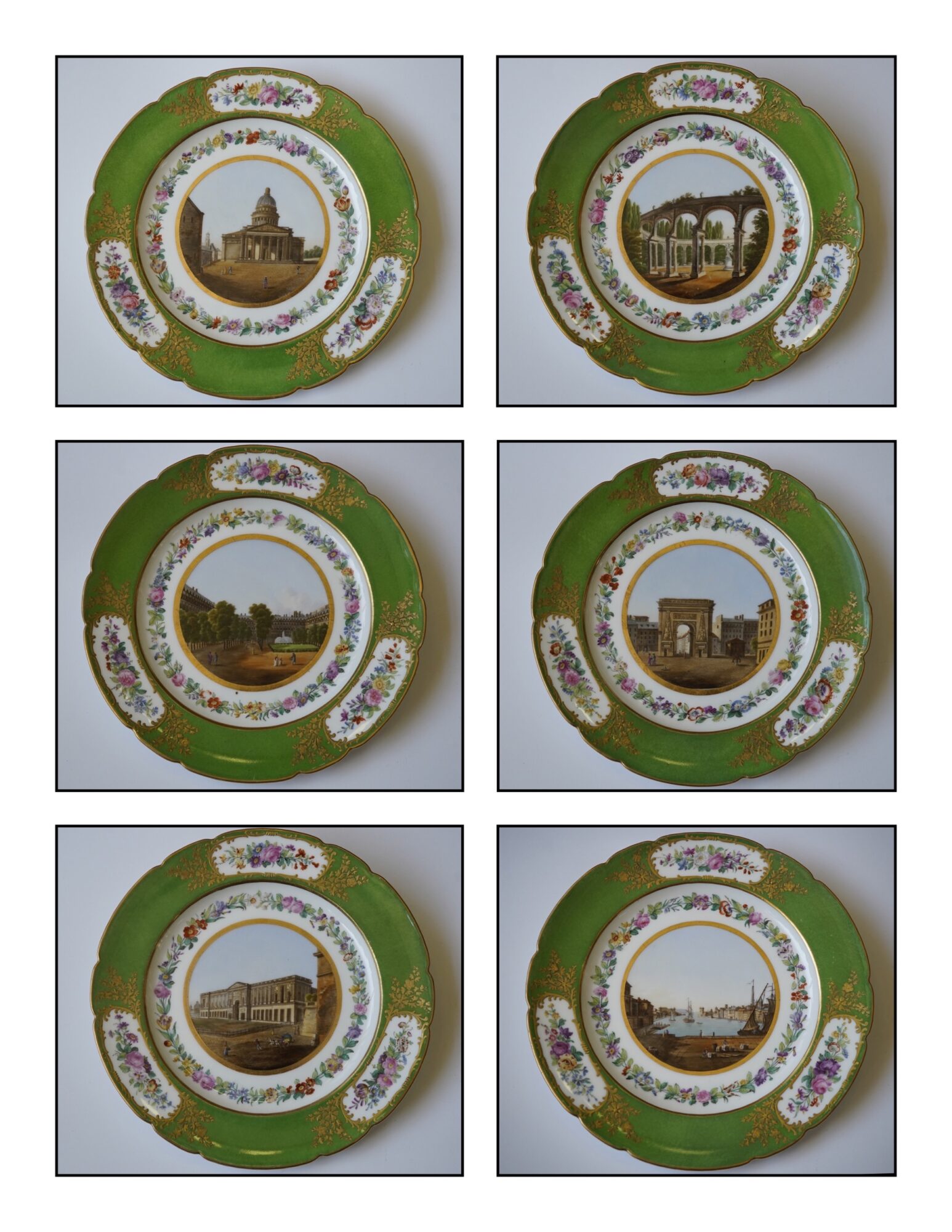
The first is a ‘dessert service’ – not that it would be used for food! It is particularly flamboyant, with scenes of Paris (and one of the port of Marseilles) within flower wreaths, with panels of flowers on a green ground enhanced with raised gilt flowers…. evoking the luxury of the Royal French factory, Sevres. Clearly, this was made for someone to take a piece of France home with them – in a way, a superior souvenir! It features large hand-painted scenes to the base of each, including: The Pantheon, Versailles, The Gardens of Versailles, Palais Royal, Porte Saint-Denis, and a view of the harbour at Marseilles.
They are each titled with the identity of the view to the back, and are also all nicely marked – which is a terrific feature of Paris Porcelain of this period. The artists usually marked their products, especially those who had the better quality output. The idea seems to have been ‘advertising’ – a clear name and address stamped & fired onto the back allowed an Englishman, for example, to trace their source to the workshop – in order to buy his own souvenir of Paris!
At this period (late 18th – 19th century_ there were more ‘decorating studios’ than manufacturers of porcelain in Paris, decorating blank porcelain with their own patterns. The porcelain therefore is not necessarily the defining factor in identification of a piece. Thankfully, they made it simple for us with their marks.

This service is the product of Jean-Pierre Feuillet, the son of a pastry chef to the the Prince de Condé. He learnt to paint in Chantilly, at a school funded by the Prince. He must have really appreciated his father’s pastries, as when Jean-Pierre showed ambition to open a decorating studio in Paris, he did so under the Prince’s protection, in 1814. This establishment on the Rue de la Paix became renown for the highest quality decoration, a ‘supplier to the aristocracy’. As such, his styles were the absolute latest, featuring all the Neo-Classical lavishness of the Restoration period. Each piece is usually hand-marked ‘Feuillet’. He took on a partner, Boyer, who continued at the same address after Feuillet’s death in 1834, mantained the creation of fine quality porcelains, and proudly marked marked ‘Boyer, successor to Feuillet’.
Alongside this service is the following scenic plate with a rich ‘Empire’ gilt border.
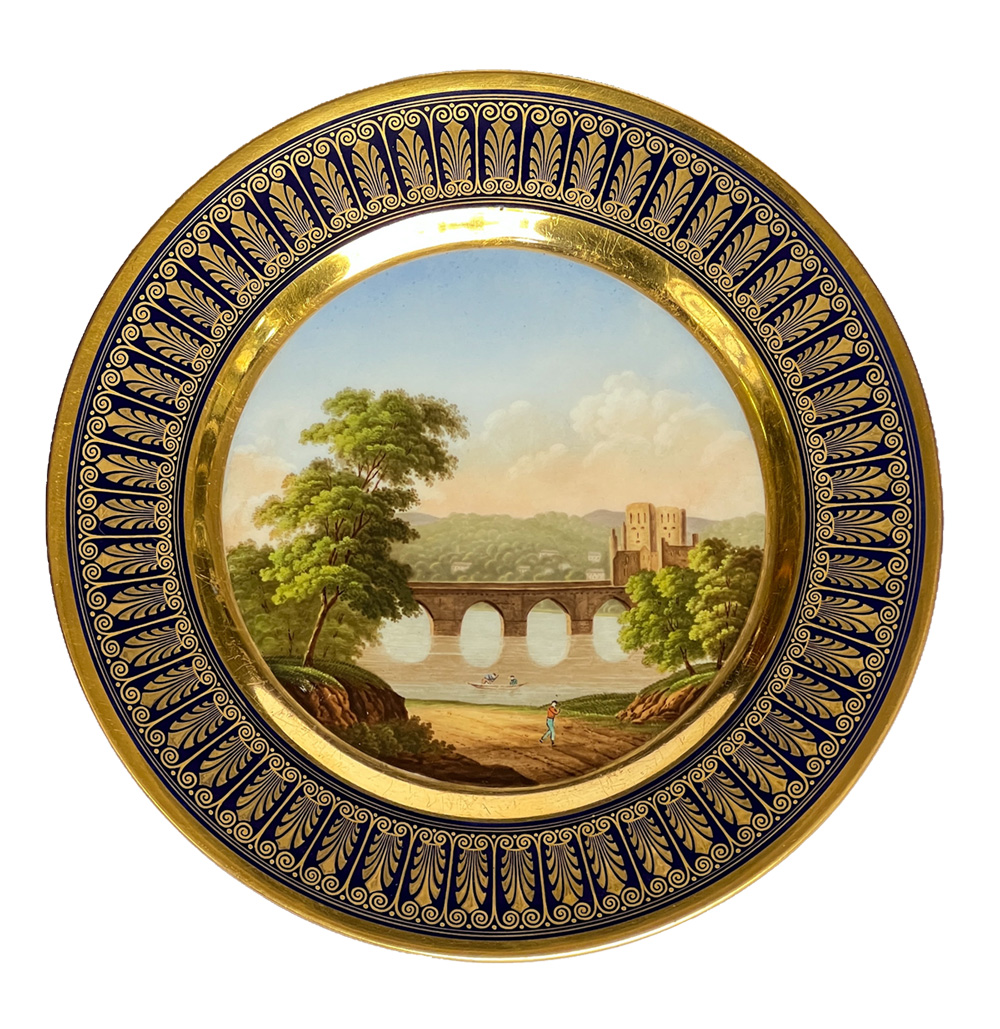
This magnificent plate is the product of Edouard Honoré, a familiar name in the Empire period porcelains of Paris. His Uncle François was in partnership with the Dagoty brothers, and had produced some of the most stunning high quality Paris products of the earlier 19th century. In 1820 they parted, and Edouard Honoré seems to have set up his own studio & showroom on Petite Rue Neuve Saint-Gilles. His Uncle, François Honoré, had actually begun his business there in 1807, partnering with an earlier studio which he took over. When François Honoré and Dagoty parted in 1820, their studio and salesroom at 4 Boulevard Poissonière was superior to Saint-Gilles, and Edouard Honoré was established there by 1824. Uncle François remained in the background as a silent partner. This plate has the mark for this latter half of the 1820’s, with the Boulevard Poissonière address – but is interesting in that it doesn’t appear exactly in any of the reference books, being almost the mark referring the ‘Ancienne Maison Dagoty’, but leaving out that reference to the previous proprietor of the address, and being set as a straight line text rather than the curved version of the before mentioned.
(ref. de Guillebon, ‘ Paris Porcelain’ 1972 , p332 #74 for the closest variation, as mentioned)
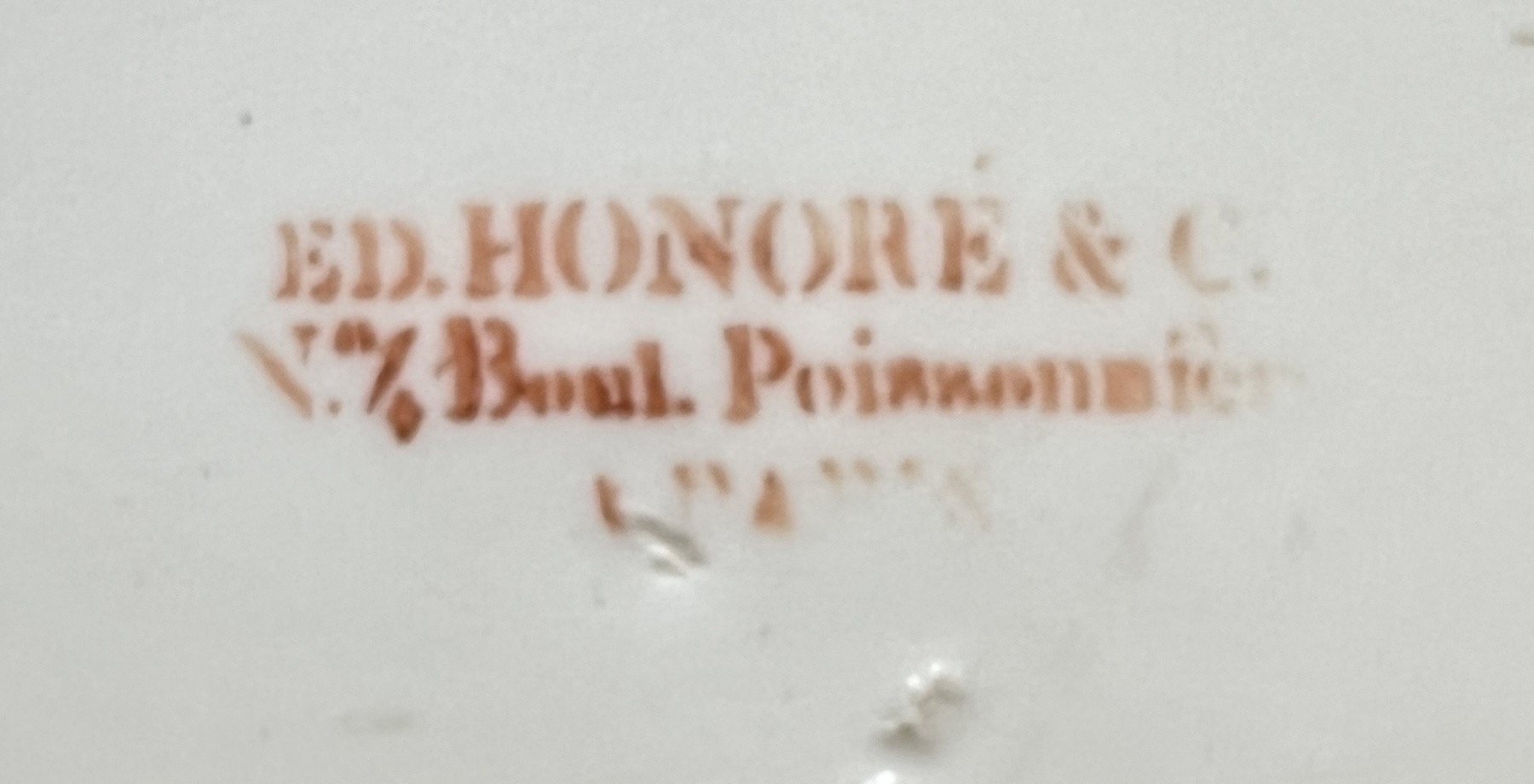
The scene is, like the Feuillet plates mentioned above, inscribed on the back. However, there’s a rather odd problem!
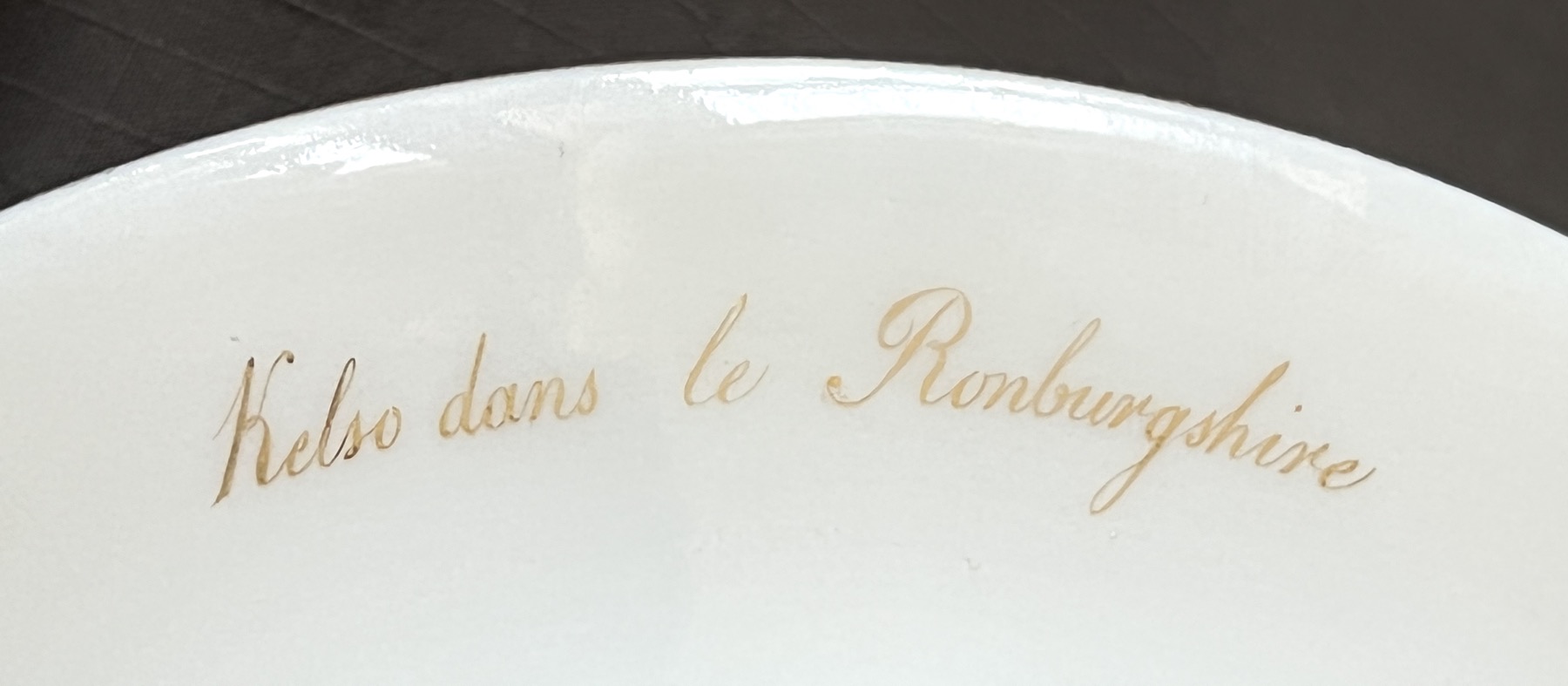
The title to the back reads ‘Kelso dans le Ronburgshire’ – so we’re looking for a town called Kelso, in Ronburgshire. Sounds almost German – but a quick search reveals there is only one Kelso that is appropriate, and it is in the Scottish borderlands! And therefore, the ‘Ronburgshire’ is meant to be ‘Roxburghshire’, ie the Shire of Roxburgh, Scotland. This spelling is found in German language texts of the time, perhaps giving a clue to the origin of the scene depicted on the plate.
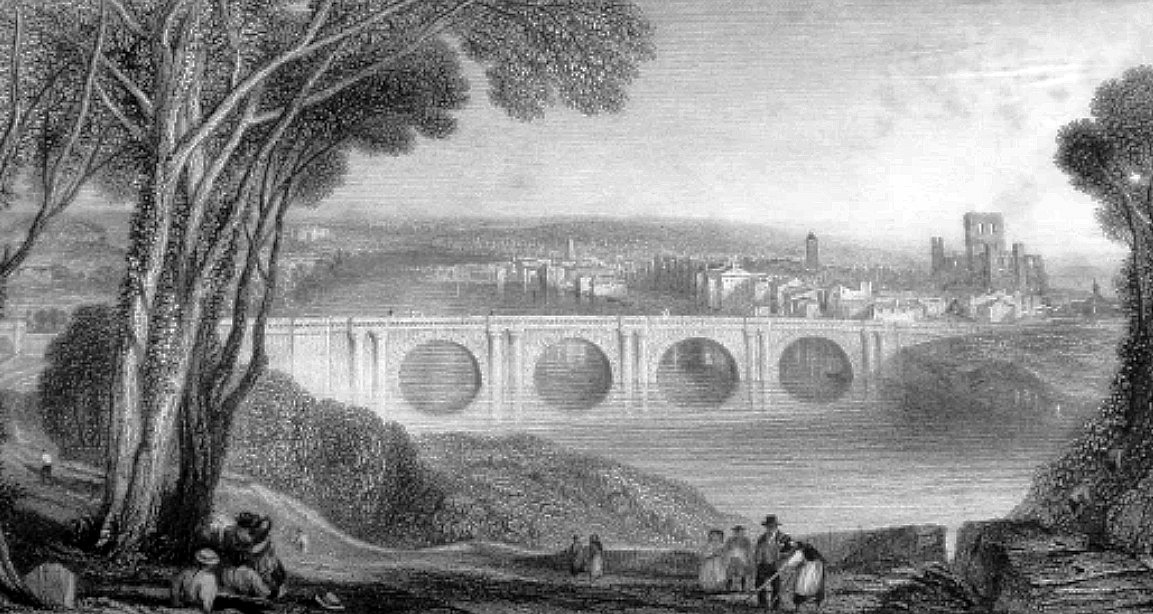
As with the Feuillet service, the scenes depicted were copied from books of engravings. Sometimes the original can be found – nothing definite for theses examples yet. However, a German publication would be a great place to start researching this beautiful depiction of Kelso. The bridge over the River Tweed depicted was constructed around 1800, and the towers are that of the ruined 12th century Kelso Abbey.
English scenes like this are not common in Paris products of this period – no doubt, it was also part of a magnificent large service, each plate depicting a British scene. A perfect souvenir for a homesick Scot in Paris in the 1820’s!
Visit the page for the pieces mentioned in this article by clicking on their image below.
-
 Paris porcelain armorial plate, Balbiano Family of Italy, by Boyer, C. 1850$560.00 AUD
Paris porcelain armorial plate, Balbiano Family of Italy, by Boyer, C. 1850$560.00 AUD -
 Paris Porcelain plate, Honoré, Scottish view titled “Kelso dans le Ronburgshire” c. 1825Sold
Paris Porcelain plate, Honoré, Scottish view titled “Kelso dans le Ronburgshire” c. 1825Sold -
 Paris Scenic service, 6pc with superb painted street scenes, by Feuillet c.1830Sold
Paris Scenic service, 6pc with superb painted street scenes, by Feuillet c.1830Sold -
 Paris porcelain plate, Armorial by Boyer, CONSTANTIA ET VIGILANTIA, c. 1850Sold
Paris porcelain plate, Armorial by Boyer, CONSTANTIA ET VIGILANTIA, c. 1850Sold -
 Paris Porcelain cup & saucer, armorial ‘Boyer Succsr to Feuillet’, c. 1850$450.00 AUD
Paris Porcelain cup & saucer, armorial ‘Boyer Succsr to Feuillet’, c. 1850$450.00 AUD

